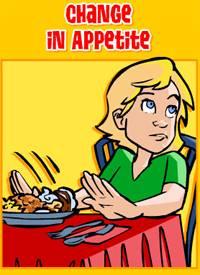What you really need to know about Fad Diets?
PDF :
Fad Diet
Introduction:
Countless are the magazines, TV programs, posters and web ads aiming to focus on physical appearance, with thinness given extreme importance. Such culture emphasizing on a slim figure contributes to the prevalence of what are called the FAD DIETS. The phrases “food faddism” and “fad diet” usually refer to eating patterns that promote short-term weight loss, usually with no concern for long-term weight maintenance, and enjoy temporary popularity. Fad diets claim to be scientific nevertheless they do not follow the scientific method in establishing their va based on the concept of eliminating certain food items because they are viewed as harmful meanwhile stressing on others to express a particular lifestyle. Whether you are Fad diets believer or not continue to figure out the other side of the story. (This article was prepared in reference to Nutritional Assessment and Care by Mosbys.)
The fad diets include the Atkins, Zone, Weight Watcher, Ornish, Volumetric, and blood type diet. Your body size and composition.
The Atkins Diet:
The Atkins diet is a low-carbohydrate diet created by Robert Atkins from a research paper he read. This diet limits the consumption of carbohydrates, keeping fat intake including saturated fats unlimited. Actually, people with weight problems tend to follow this diet since they can still consume fatty food such as breaded chicken and butter-fried eggs freely. Although among other FAD diets, The Atkins diet gained widespread popularity in 2003 and 2004 because it promotes one of the highest weight loss rate(2Kg(4.4 lb)/week), all studies show that people on the Atkins diet are more prone to develop dys-lipidemia (high blood cholesterol levels) during later life stages due to the high consumption of fatty food.. Moreover, it is also worth noting that statistics show that almost all Atkins dieters whenever they stop following this diet they start consuming huge amounts of carbohydrates. The latter lets them regain all the weight they lost and actually in a shorter time interval.
Zone Diet:
This diet is a moderate – carbohydrate diet plan popularized in books by biochemist Dr. Barry Sears.
This diet moderately limits the consumption of carbohydrates (40% of total daily calories..) Eight glasses of water are recommended daily. The food allowed include lean poultry , seafood, egg whites, low fat dairy product , most fruit and non-starchy vegetables, oatmeal, and small amounts of canola and olive oils.. A weight loss of 0.68 Kg(1lb) to 0.9 Kg (2 lb)/wk is suggested. This diet recommends aerobic exercise 30 to 90 minutes daily depending on weight goals. The Zone diet is reported as one of the easiest regime to adjust to, i.e., having the fewest adverse affects such as fatigue or hunger. Actually, the Zone diet recommendations are not far from those of the ADA (American Dietetic Association) and many celebrities comprising Madonna, Demi Moore, Sarah Jessica Parker, Jennifer Aniston, Sandra Bullock were on this diet.
Dr. Ornish Diet: Eat more Weigh less
This diet is high carbohydrate, moderate or low fat vegetarian diet plan founded by Dr. Dean Ornish; the Clinical Professor of Medicine at the University of California, San Francisco.
The program consists of four principles:
1. A very low fat, high – complex carbohydrates diet rich in fruits, vegetables, whole grain, beans, and legumes;
2. Regular exercise
3. Stress reduction and meditation;
4. Love (learning communication skills and developing commitments and relationships with family and community). Non- fat dairy products and small amounts of plant oils are included. Foods to avoid include meat, poultry, fish, caffeine-containing products, high-fat foods, processed foods, alcohol, sugars, honey, and syrups. Reduction in heart disease risk has been demonstrated in people adhering to the program. However, this diet can be difficult to follow when eating away from home, and not all individuals would want to follow a vegetarian diet.
Weight Watchers:
This program has a point system to categorize foods and quantify intake.
In the point system each food is assigned points based on its fat, calories and fiber per serving with higher-calorie foods having more points. Based on body size and weight goals, individuals consume a particular number of points daily. Essentially all foods are allowed on the diet. This diet encourages aerobic exercise. A clinical study in 2005, reported that among the Weight Watchers participants the average net weight loss in a one-year period was 3.0 kilograms (6.6 lb). Statistics show that 80% to 95% of weight loss attempts with weight watchers fail on the long-term.
Volumetric:
This diet is a low calorie, high bulk, and low fat eating plan initiated by Dr. Barbara Rolls.
This diet emphasizes foods with greater water content because they have greater volume and satiety. Tables of energy densities (EDs) are provided, based on the energy contained in the food divided by its weight in grams. Low-ED foods.
Category 1: Such as non-starchy vegetables and fruits, nonfat dairy products, and broth- type soups, can be eaten liberally.
Category 2: Such as starchy vegetables and fruits, bananas, grains, fish, skinless poultry, low-fat salad dressings, and pasta, can be eaten daily in controlled portions.
Category 3: Such as meats, cheese, pizza, regular salad dressings, and ice cream, can be eaten in controlled portions on a weekly basis.
Category 4: (High ED), such as chips, candy, cookies, and butter, can be eaten in small amounts occasionally. Starting each meal with a low-calorie soup or salad is recommended, to speed up the feeling of satiety. The suggested water intake is 9 cupsfor women and 13 cups for men. The weight loss expected with this diet week is 0.5 to 1 Kg (1 to 2 lb) / week. The fact that the plan encourages regular, moderate physical activity is a definite plus.
Blood type diet:
The blood type diet is a nutritional diet advocated by Peter D'Adamo, a naturopathic physician, and outlined in his
book Eat Right 4 Your Type. D'Adamo claims that ABO blood type is the most important factor in determining a healthy diet, and he recommends distinct diets for each blood type
D'Adamo groups each blood type with unique dietary recommendations:
Blood group O: The corresponding diet recommends that this blood group eat a higher protein diet.
Blood group A: The corresponding diet emphasizes vegetables and free of red meat, a more vegetarian food intake.
Blood group B: People of blood type B are the only ones who can thrive on dairy products.
Blood group AB: This blood type diet treats this group as an intermediate between blood types A and B. The consensus among dietitians, physicians, and scientists is that this diet is unsupported by scientific evidence.
The South Beach Diet:
This low carbohydrate diet plan was designed by cardiologist Arthur Agatston and dietician Marie Almon as an alternative to low-fat approaches. This diet has three phases:
Phase 1: 2 weeks with virtually no carbohydrate intake. South beach desserts are allowed, and a loss of 3.6 to 6 Kg is promised ;
Phase 2: The period of ongoing weight loss, when “good carbohydrates” such as fruits, vegetables, and unrefined starches are allowed, the weight loss is suggested to be 0.45 to 0.9 Kg/wk.
Phase 3: Includes more of the same foods as during the second phase but still in moderate amounts. According to recent data, in one 12-week study of 40 overweight people, those who followed the South Beach Diet lost an average of 13.6pounds.
The Cabbage Soup Diet:
This low-fat, high-fiber diet was designed around heavy consumption of a low-calorie cabbage soup over the time of seven days. Different spices are added daily to the soup to liven it up. The typical claimed intent of the diet is to lose 4.5 kg of weight in a week. 4 glasses of water per day are recommended. It should be complemented with a quality daily multi-vitamin. People known to follow this diet are those who have a special occasion coming up.
The Morning banana diet:
This diet was created by Osaka pharmacist Sumiko Watanabe, It gained popularity in Japan in 2008, causing shortages of bananas in food stores. A follower of this diet plan eats as many bananas as they want with room temperature water or a glass of milk for breakfast. The dieter can choose what they want for lunch and dinner. In fact, there is no suggested weight loss rate within this diet because it’s highly individualized and lunch and dinner meals are kept free.
Hollywood Diet:
This diet also known as grapefruit diet is a short-term fad diet that has existed in the United States since at least the 1930s. The diet is based on the claim that grapefruit has a fat-burning enzyme or similar property. The grapefruit diet is a low-carb diet. It suggests that grapefruit helps burn body fat when eaten with foods high in dietary fat, which is why the grapefruit diet encourages consumption of meat, eggs and other foods that are rich in fat and protein. A typical breakfast menu usually includes bacon and eggs. The grapefruit diet restricts consumption of carbohydrates by eliminating sugar, sweet fruits and vegetables, grains and cereals. The grapefruit diet lasts for 10 to 12 days followed by 2 days off. Nowadays, the Hollywood diet has spread its known diet drinks in the USA promising users to lose up to 2.3 Kg in 24 hours, and 4.54 Kg in 48 hours!!!!!
The Dukan Diet:
This high protein diet is one of the most popular diet plans in France. It is a protein-based diet designed by French nutritionist and dietician, Pierre Dukan. Nowadays, more than 5 million French people are on this diet. This diet is based on a list of over 100 allowed foods, 72 from the animal source and the rest from the plant world. The first phase is designed to enable dieters to rapidly lose 2 to 3 kilograms in 2–7 days by kick-starting their metabolism. During later stages, breads and fruits are reintroduced. This diet is not recommended for patients diagnosed with kidney problems because foods rich in protein put more stress on the kidney.
Conclusion:
Unfortunately, the fad diets are becoming more popular because they promote rapid weight loss. Nevertheless,
many of us still ignore the other side of the story. These diets are nutritionally undesirable for one or more of the following reasons:
1. They promote transient water and lean body mass loss than lasting changes in eating habits.
2. They are nutritionally inadequate;
3. They are medically unsafe.
4. Often lead to the development of poor eating habits, such as binge eating and skipping breakfast, which contribute to weight gain. In fact, all weight reduction diets should be evaluated with the below criteria before beginning the program. In particular, the dieter should remember that very rapid weight loss can pose health risks, diet plans that
focus heavily on one or a few foods can be nutritionally inadequate and developing improved eating and lifestyle habits (i.e. recognition of appropriate serving sizes, focusing on healthful food choices, and obtaining regular physical activity) is a key component of a successful weight reduction regimen.
















